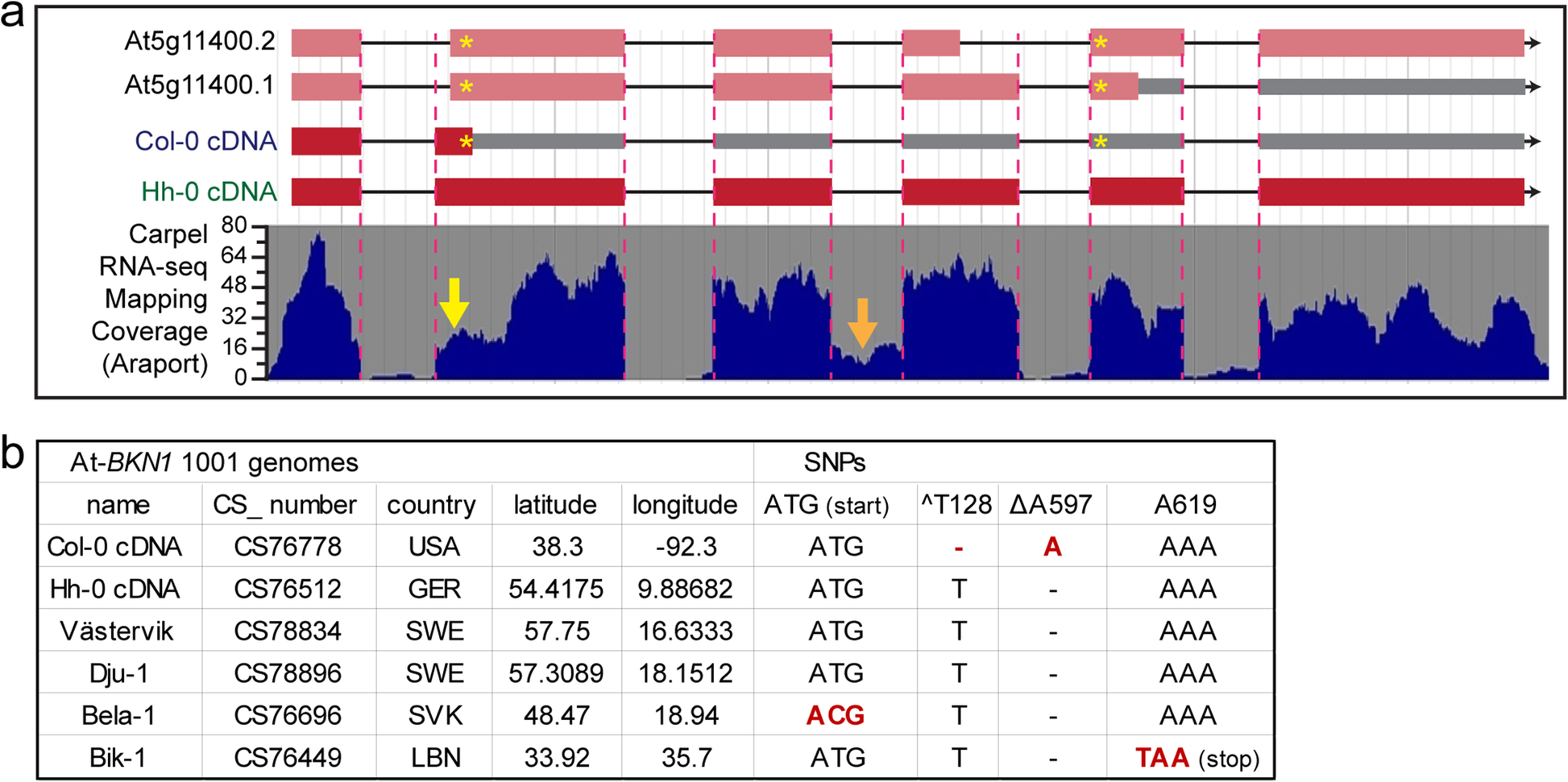Fig. 5

A. thaliana BKN1gene models and ecotype polymorphisms.a.A. thaliana BKN1gene models are shown with carpel RNA-Seq mapping coverage from Araport [45]. Yellow astericks (*) mark two in/del SNPs in Col-0BKN1当compared to Hh-0BKN1andA. lyrata BKN1. For the BNK1 Col-0 gene annotations and cDNA, the first asterisk marks a 1 bp deletion (T) resulting in an adjacent premature stop codon and the second asterisk marks a 1 bp insertion (A) that would result in a downstream premature stop codon for the At5g11400.1 annotation. Based on the reduced carpel RNA-Seq coverage at the 5′ end of theBKN1exon 2, there may be alternate splice sites in use (yellow arrow) and some of these potential alternate splice junctions would restore theBKN1Col-0 reading frame to produce a longer protein as predicted for the At5g11400.1 and At5g11400.2 annotations. See also Additional file1: Figure S3 and S4. The orange arrow delineates the third intron that is not properly spliced in the top RT-PCR band in Fig.1b.b.A. thaliana BKN1polymorphisms in different ecotypes. In addition to Hh-0, Västervik and Dju-1 are predicted to encode a full length BKN1 protein (based on genomic sequencing). Bela-1 and Bik-1 displayed other SNPs that disrupt the BKN1 open reading frame (see also Additional file1: Figure S6)
